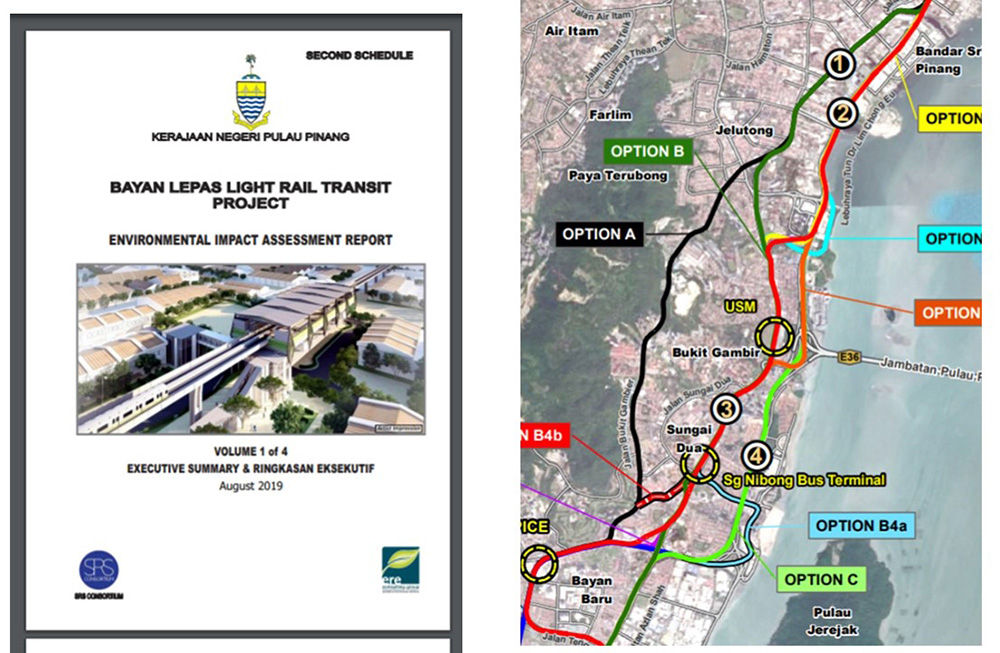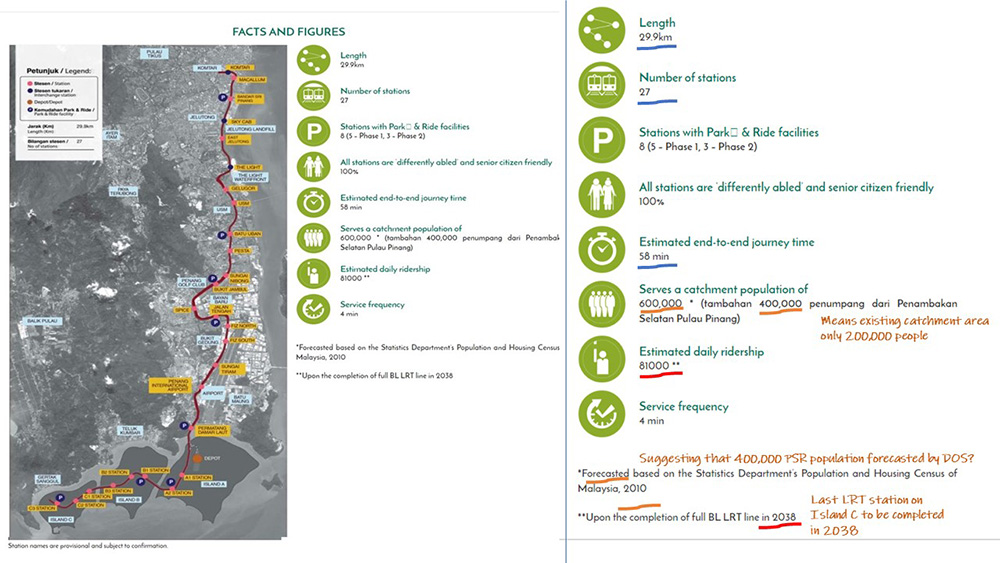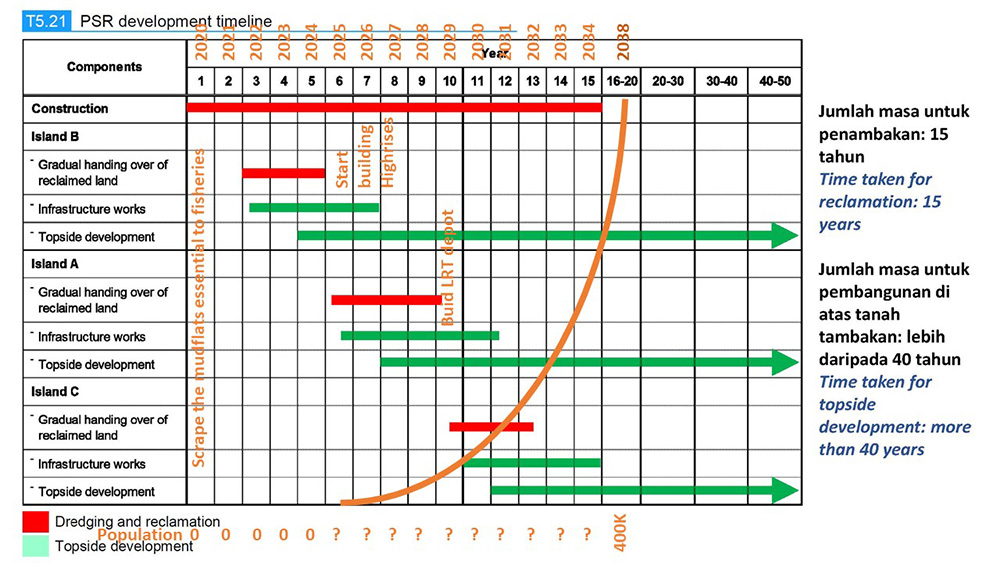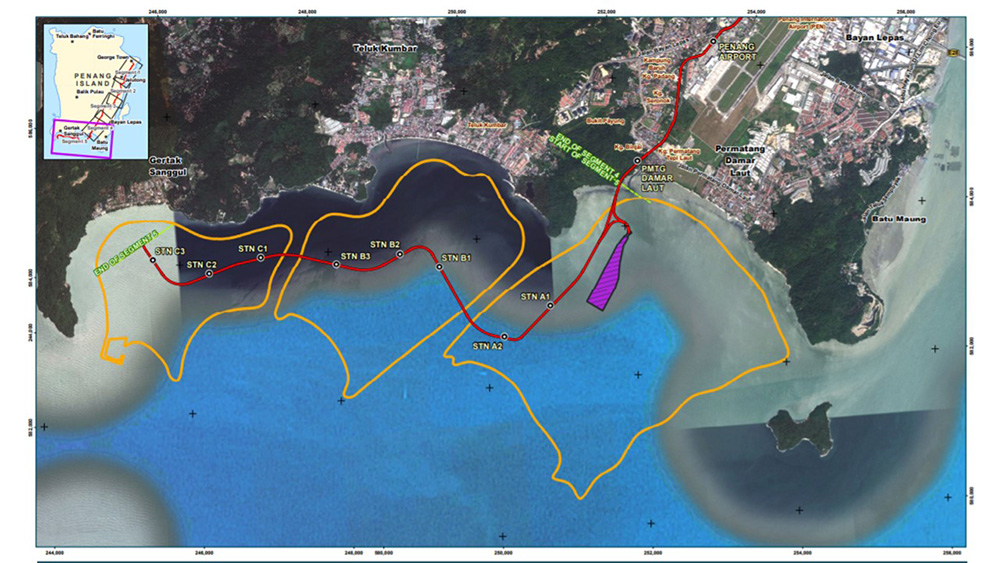LETTER | The Environmental Impact Assessment (EIA) Report for the RM10 billion Bayan Lepas LRT was released on Aug 19, 2019. Oddly enough, the Penang state government promoted a “public inspection” of the Penang Transport Master Plan (PTMP) instead of a display of the EIA. Is this “public inspection” equivalent to a public display of the EIA? Was the actual EIA report shown to all those who turned up at the booths? And if not, when and where will the actual EIA report be put on public display?
Despite the lack of the display of the EIA, Chief Minister Chow Kon Yeow was most pleased to tell us that 97 percent of the 16,140 visitors to the “public inspection” in the first month have given their approval for the LRT, with only 380 persons objecting.
The three questions asked at the "public inspection" booths are as follows (translated from Malay):
Question 1: “Do you support the PTMP as a means of reducing traffic congestion in Penang island?”
Question 2: “The priority public transport to be built under PTMP is the Bayan Lepas LRT. Will you be using it upon completion?”
Question 3: “Do you agree that Penangites should look at public transport as a greener and cheaper way of getting around?”

The display at a few of the booths consisted mainly of technical drawings, artists' impressions and proposed alignments. The respondents might have gathered from news reports that the price tag for the PTMP is RM46 billion and the capital expenditure (Capex) for the LRT is RM10 billion. However, they might not be aware that in the original 2015 proposal, the LRT was estimated to cost RM4.5 billion, and the annual Operation & Maintenance was calculated at RM170 million in the first year of operation.
LRT only ready in 2029?
According to the Bayan Lepas LRT EIA, the LRT depot will be built on “Island A” of the yet-to-be-reclaimed Penang South Reclamation (PSR) project, also called the “Penang South Islands”. The last station will be built on “Island C”. But according to the “Proposed Reclamation & Dredging Works for the Penang South Reclamation (PSR) Environmental Impact Assessment” displayed earlier this year, the first island to be reclaimed is “Island B”. If the reclamation starts next year (perish the thought), the scheduled completion of Islands B, A, and C, will take place in or around 2025, 2029 and 2038 respectively.
The ticket revenue from the Bayan Lepas LRT must be able to pay for the routine Operation & Maintenance (O&M) failing which, the Penang state government and perhaps the MBPP might be saddled with the shortfall. Therefore, it is worth looking more closely at the Bayan Lepas LRT “Facts and Figures” published on the official PTMP website.
Only 200,000 people in the catchment area?
The most important figure is that of ridership. The soundness of the LRT ridership projection will determine whether the chief minister will leave a glorious LRT legacy or a “white elephant” – a transport infrastructure overdesigned for excess capacity.

Originally touted at 42 million per year (116,000 per day), the projected Bayan Lepas LRT ridership has now been revised to 29.565 million per year (81,000 per day). With that kind of ridership, the O&M costed at RM170 million per year (taking the conservative 2015 figure) can reach break-even point with a ticket price of RM5.75 per trip. Please note that the routine O&M increases as the number of passengers go up, while non-fare revenue is expected to be only about 10 percent of fare revenue.
At a ticket fare of RM5.75 per trip, many locals will try out the LRT and take it occasionally. But with only 200,000 people living in the corridor how many will regularly commute to work by LRT? How does this ticket fare compare to the cost of driving or riding a motorbike? Is there enough incentive for commuters to ditch their private vehicles especially when the Pan-Island Link highway is also being built?
When it comes to the Bayan Lepas LRT “Facts and Figures”, the devil is in the details, in parentheses and in the footnotes. One of the so-called facts, given in mixed English and Malay, states that the LRT “Serves a catchment population of 600,000* (tambahan 400,000 penumpang dari Penambakan Selatan Pulau Pinang)”, meaning the “additional 400,000 riders” will come from the Penang South Reclamation (PSR). This is an admission that the Komtar–Permatang Damar Laut corridor currently has a catchment population of no more than 200,000.
The first footnote states misleadingly that the 600,000 catchment population is "Forecasted based on the Statistics Department's Population and Housing Census of Malaysia, 2010”. As the Statistics Department could not have known about the yet-unplanned three islands or its projected 400,000 population, the forecast could only apply to the 200,000 population in the LRT corridor.
The second footnote, after “Estimated daily ridership: 81,000”, attaches the condition, "Upon the completion of BL LRT line in 2038”. Projected ridership of standalone LRT lines can often be grossly over-optimistic, as the Kuala Lumpur has shown. If the ridership of 81,000 people is based on a population catchment of 600,000, then the Bayan Lepas LRT will be bleeding badly at least until 2038, and probably for many years after that. The annual operating deficit which could be more than RM100 million in the first few years will have to be tackled by the Penang state government with an annual revenue of around RM1 billion. Have they done the maths?

The Bayan Lepas LRT cannot operate without a depot and so the LRT can only begin operation in 2029 at the earliest. Putting together the information from the PSR EIA and the Bayan Lepas LRT “Facts and Figures”, the population of the three artificial islands is projected to increase from zero population in 2025 (when the first residential properties are built on Island B) to 400,000 people in 2038 (when the last LRT station is completed). Has any politician or government officer ever questioned this figure?
14 years to reach super-high density?
Within 14 years, the three PSR islands are projected to achieve a population density of more than 20,000 people per km2. This would be a population density higher than central Paris, Manila, London, New York City, Singapore or Jakarta. Have Malaysian town planners commented on this projection?
What were the survey respondents agreeing to?
It is true that most of the LRT survey respondents agreed to having a Penang Transport Master Plan to ease traffic congestion? They also agreed to try out the LRT when it is ready and to welcome green and cheap public transport. But were they aware that they would have to wait nine years for the LRT to start operations and 19 years for the LRT routine O&M to reach break-even point according to the most optimistic calculations?
Did those survey respondents also unwittingly agree to land reclamation (because without Island A there can be no LRT) and to the ushering in a population of 400,000 people, whether local or foreign, to compete with the rest of the islanders for water supply and road space? Presumably, the government is planning to have a firesale of PSR properties at home or abroad in order to make sure our LRT gets the ridership it needs.
Without the reclamation of the three islands and the miraculous population increase, the LRT cannot be sustained by ticket revenue alone, at least not within the first few decades. Soon, funds will dry up for its proper maintenance and breakdowns will be frequent. Did the survey respondents also unwittingly agree to long-term support of the LRT project by paying higher taxes and higher assessment rates?
Legacy project at whatever cost?
Has the Penang state government also budgeted for the renewal of train sets (as is done in Singapore)? Without this repeated capital expenditure investment and without adequate ticketing revenue to offset the routine O&M, the Penang LRT will turn into the proverbial “white elephant”. Realistically, a white elephant project has to be abandoned, unless, of course, political patronage can guarantee the necessary bailouts.

The bulk of the RM46 billion PTMP is meant to be implemented on Penang island (size 1,048 sq km, population 800,000). With so many huge infrastructure projects to manage at the same time, has the Penang state government already bitten off more than it can chew? Just days before the EIA is due to lapse on Nov 1, work on Consortium Zenith Construction’s three highways has yet to start in earnest. Almost one year after the tragic landslide at Bukit Kukus that killed nine workers, the Paya Terubong highway project has yet to be completed, despite incurred time and cost overruns.
Noting these conspicuous delays, does the Penang state government have any firm plans to alleviate our traffic woes through a common-sense solution, that is, improving the efficiency and coverage of our bus service?
Or will public transport in Penang continue to be neglected until the scheduled completion of the LRT in 2029 at the earliest, so that our chief minister can have his legacy project at whatever cost?
The views expressed here are those of the author/contributor and do not necessarily represent the views of Malaysiakini.

